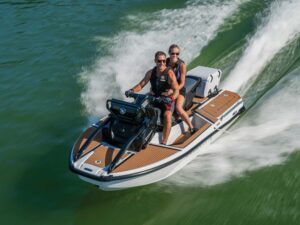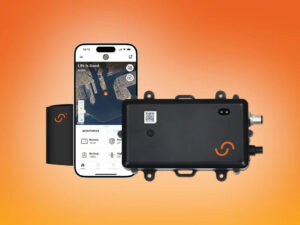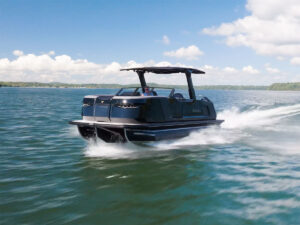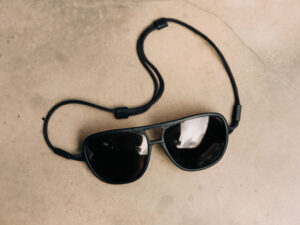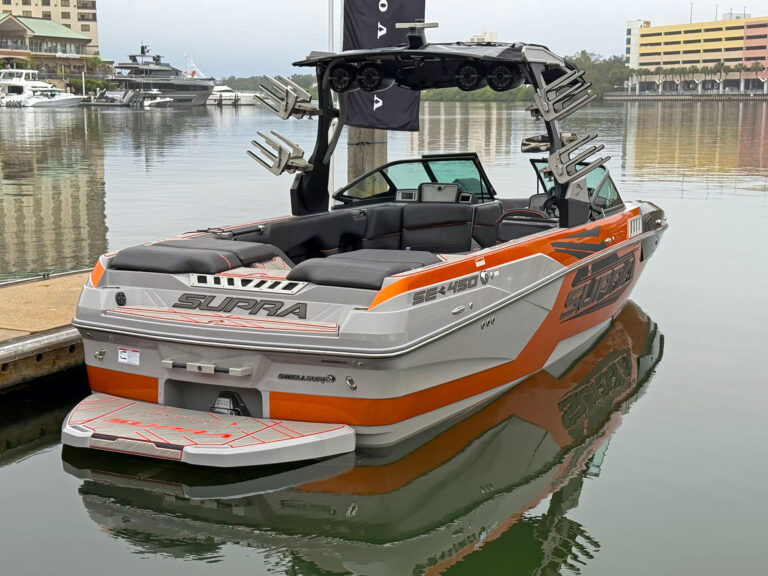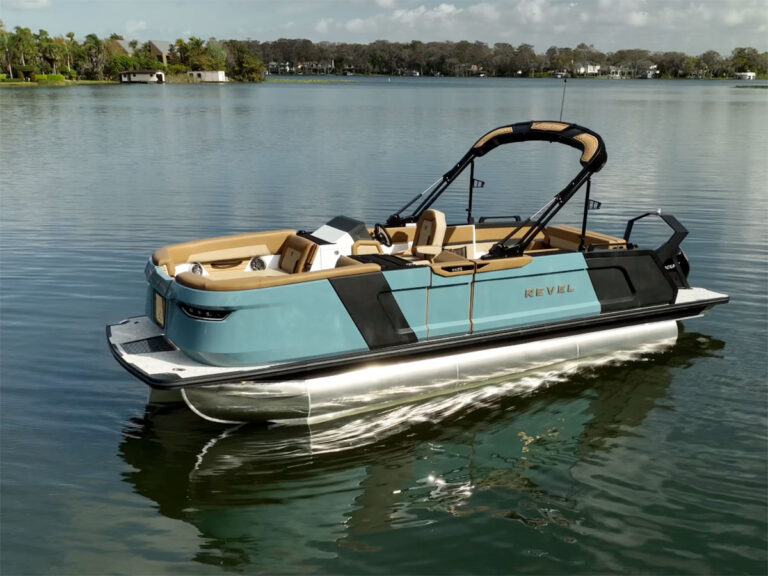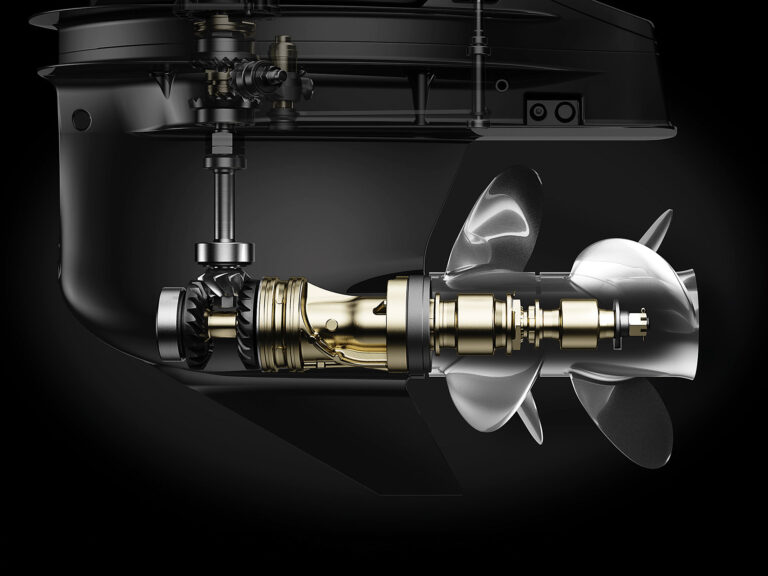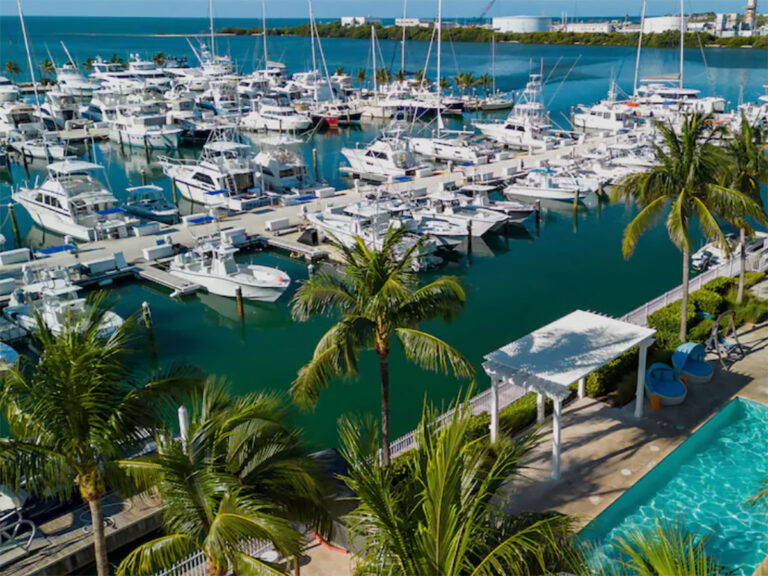
Of all the tow sports, wakeboarding is king. A cross between skateboarding and surfing with an emphasis on maximum airtime, wakeboarding exerts the single greatest influence on tow-boat design. In short: It’s cool, and seemingly everyone wants to do it. But depending on how you go about it, the process can be fun and easy — or a prolonged duel between rider, boat and driver. For every rider who’s a natural and every boat driver who delivers the perfect pull, there are countless others who struggle: riders who can’t get the hang of the wakeboard start or sideways stance; kids who are intimidated to even give it a try; and boat drivers who don’t do either any favors by messing up the water when those riders fall, or by having a hot hand on the throttle.
Our friends at LearnWake were instrumental in helping us produce this piece. Be sure to check back often for new instructional videos that will enhance your wakeboarding experience.
Kids First
As any parent will tell you, kids learn at their own pace. You might want them to be the next wake prodigy, but they might just be doing their best by strapping on a board and getting in the water. Don’t push them. Instead, let them learn and prepare in gradual, non-intimidating fashion. The following drills have been designed by LearnWake to help your child conquer any fears and absorb skills in a fun way. Timeline? That’s up to your child. What one might conquer in an afternoon might take another weeks, months or even years to feel comfortable with. Let them dictate the pace, and everyone will be a lot happier — and more successful.

One of the best ways to ease young kids into wakeboarding is simply allowing them to get acclimated to the boat and the water. With the engine off, encourage them to jump off the swim platform and tread water in their life jackets, getting used to the flotation and how it will affect them in the water. If you have access to a larger wakesurf board, stand-up paddleboard or even just a tube, let them float on it with the towrope in hand, and push them out to the rope’s full length to become accustomed to the distance from the boat. Next, reel them in. This will help the child learn how to wakeboard by resisting the pull and enjoying the feeling of gliding over the water without fear of the boat leaving them or going too fast.

When they begin to show interest in doing it for real, don’t rush the process. Start with some land training on a grassy lawn. Tape a large piece of cardboard to the bottom of the wakeboard, have them get into the bindings, then use a towrope to drag them across the grass. The cardboard will protect the board and create a slick surface to skid on; the child will learn to resist the pull of the rope, maintain his or her stance and balance, and acclimate to wakeboarding’s sideways stance. If you have access to a lengthy shoreline with a gradual, sandy drop-off, you can even extend this practice to the water. Tie two wakeboard handles together and have the child sit in the water. Then you can literally tow them by hand, pulling them through a wake start as you run along the shoreline. If you’ve got the stamina and they’re quick learners, they can even take a brief ride by edging away from the shoreline.
When that confidence is high and they’re ready, move to the water, which is where they’ll really learn how to wakeboard.
Getting Up
Whether young or old, beginning wakeboarders can benefit from two things: correct body position and drills designed to enforce the idea that relaxing, not fighting the board or boat, is the quickest path to success.

The correct body position is key to the starting process. Riders should start in the water with towrope in hand, arms out and knees relaxed. As the towrope tightens, water pressure will naturally fine-tune that position, extending the arms and pushing the knees into the chest. When this happens, the board will assume a nice angle of incline. Hold that position and a rider will be off to a great start.
Drills can reinforce the process. Start with the rider sitting on the sun pad, and have the teacher extend a hand and pull them up to their feet. This is a reminder of how easy it is to let someone pull you from a seated position. It also reinforces the idea of the rider not trying to get up on his own, but instead relaxing and not fighting the pull. Next, move that same drill to the water. Have the rider put on the board and get in the water with the towrope. Then stand on the swim platform and pull the rider in until his or her board contacts the swim platform. Now grab the triangle of line formed by the towrope handle, brace yourself, and pull the rider up onto the platform. If the rider resists, pulling with his arms or pushing with his legs, drop him back into the water. The goal is for the rider to learn to relax and let the boat do all the work.

Another good drill just before a rider attempts a start for real is to get him in position at the end of the towrope and just nudge the boat into gear. As the boat slowly idles forward, encourage the rider to stay relaxed and maintain the starting position. When they’re able and don’t let themselves get pulled out of position, they’re ready to progress to their first deepwater start. If they can’t maintain that position, consider returning to the drills at the boat.

When it’s time to do it for real, get into position (for kids, an adult may want to don a life jacket and float beside them), take any slack out of the line, and wait for your rider to give the signal. We recommend that riders don’t let go of their grip on the handle, so encourage them to keep both hands on the handle and just raise the handle above the board to indicate they’re ready for the driver to take off. As the driver, once you get that signal, accelerate evenly up to speed — between 10 to 18 mph for kids, 16 to 20 mph for smaller adults, and 18 to 22 mph for larger adults.
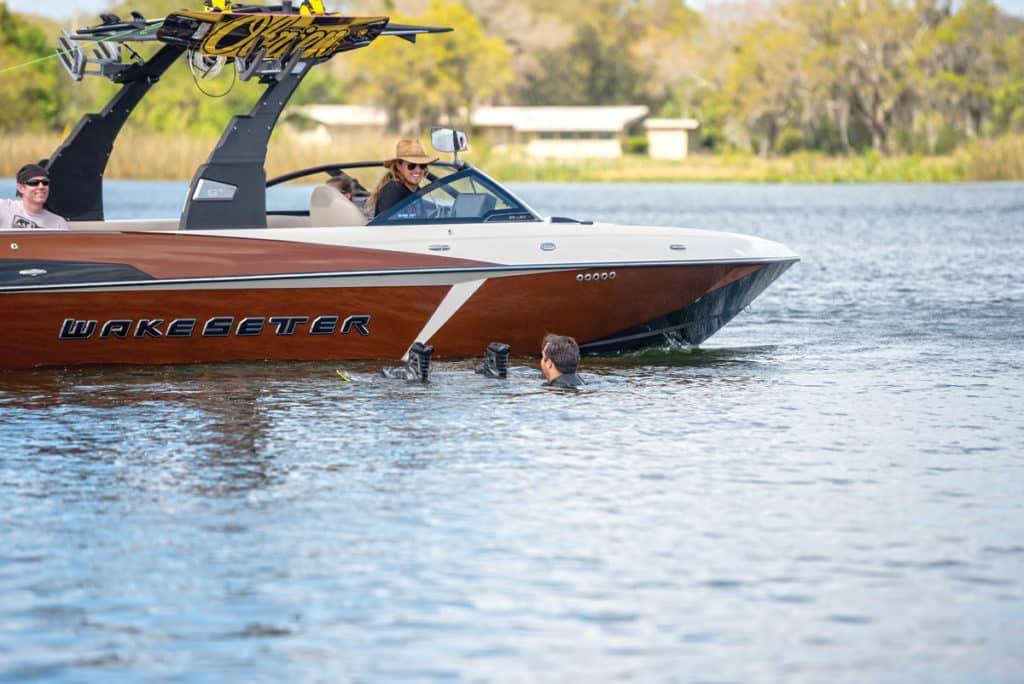
After the Wipeout
Returning to a downed rider might not seem like an area that requires much instruction. A rider falls, you turn the boat back around and pick him up. But like everything else in life, there’s a right way and wrong way to do it. Choose the latter and you’ll not only send endless rollers across the water, which annoys your rider and the other people trying to enjoy the lake, but you could also risk swamping the boat or striking the downed rider in the water. Choose the former and you’ll keep everyone happy — and safe.
We’ve all probably seen what not to do. A rider falls, the driver cranks a hard-over turn at speed to race back, and the lake quickly turns into a washing machine. Other boaters hate you, you risk swamping the bow of your boat, and your rider is left trying to get the handle back while he bobs uncontrollably in the wakes. Or maybe the driver makes a controlled return but approaches the rider off the boat’s port side, putting the rider at risk when the driver loses sight of the rider below the rim of the cockpit.

The best method is to take everything slowly and easily. Start the process the minute the rider falls. Smoothly let off the throttle and spin the wheel to the right, which will lessen any wakes. Begin your approach toward the downed rider, immediately verifying that he is OK. Idle back toward the person, and make sure to always keep him on the boat’s starboard side so you maintain a clear, uninterrupted view. As you draw close, initiate a gentle starboard turn around the rider, keeping him a safe distance from the boat and allowing the towrope to gradually draw closer. Maintain a slow speed, avoiding any sharp angles to the boat’s path. Excessive speed or angle will create painful friction as the rope passes through the rider’s hands while he waits for the handle. It could even result in the rider losing grip on the rope and it wrapping around his neck or shoulders.
Once the tow handle draws close, shift the boat into neutral. Allow the rider time to grab the handle and get into proper position for the start. Once he is ready and gives you the signal, put the boat back in gear, take out any slack in the line, and get him back on top of the water. Your rider will approve — as will other boats on the lake.

Hand Signals
Anytime you’re wakeboarding — but especially during the learning process — communication between rider, spotter and boat driver is key. The universal language? Hand signals.
Most people probably have seen the basics. A thumbs up indicates you need more speed; a thumbs down indicates you want less. To indicate a minimal increase or decrease, just hold the signal steady. To indicate a larger change is necessary, crank your hand up or down in an exaggerated motion. Remember to hold your hand out away from your body, which makes it easier for the observer to distinguish your signal.
Other necessary signals include “I’m done,” indicated by a patting motion on the top of the head, followed by simply dropping the rope after the rider is certain the spotter or driver saw the signal. Don’t use the common slashing-across-the-throat motion to indicate you’re ready to stop. Save that for an emergency, when you need the driver to shut the boat off “now.”
To indicate you’d like to turn around and head back in the direction you just came, make a swirling motion with your index finger in the air.
If at any time you need to speak to the driver and these signals fail, just drop the handle.
Want to check out more task-specific signals, like telling the driver to move farther from shore, clean up a sloppy wake, or perform the wakeboard-specific “double-up” turn?

